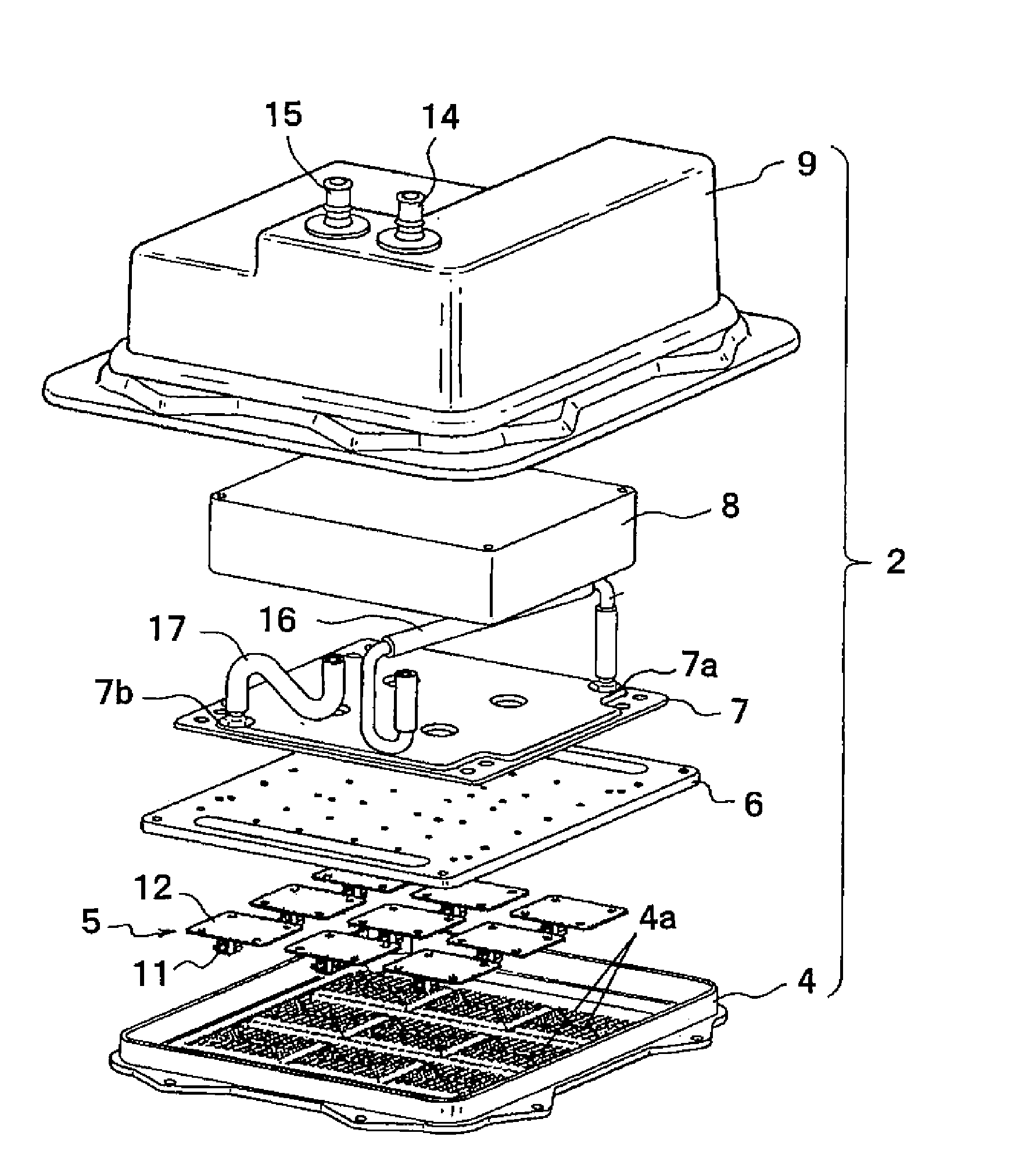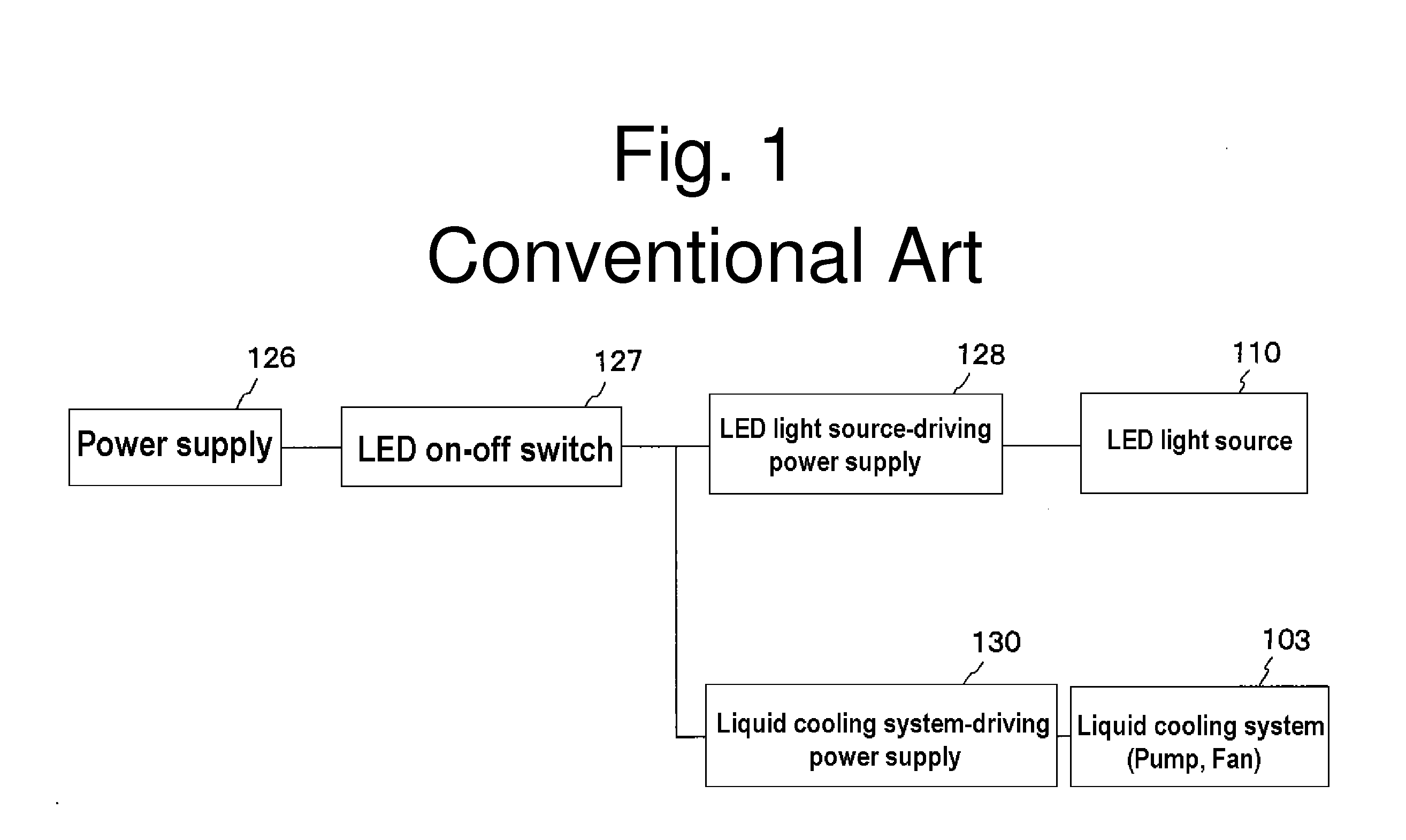Liquid-cooled LED lighting device
a technology of led lighting and liquid cooling liquid, which is applied in the direction of lighting and heating equipment, process and machine control, instruments, etc., can solve the problems of thermal insulation, the efficiency of dissipation of the heat received by the cooling liquid to the outside air is significantly reduced, and the output power is limited
- Summary
- Abstract
- Description
- Claims
- Application Information
AI Technical Summary
Benefits of technology
Problems solved by technology
Method used
Image
Examples
Embodiment Construction
[0090]A description will now be made below to liquid-cooled LED lighting devices according to the presently disclosed subject matter with reference to the accompanying drawings in accordance with exemplary embodiments. In the description of the subject application with reference to FIGS. 4 to 22, irrespective of the posture of the illustrated lighting device, the light emission direction may be referred to as “front (front surface side),” and the opposite direction may be referred to as “rear (rear surface side).”
[0091]First, the basic configuration of a liquid-cooled LED lighting device made in accordance with principles of the presently disclosed subject matter will be described with reference to FIGS. 4 to 7.
[0092]FIG. 4 is a perspective view illustrating the internal structure of the liquid-cooled LED lighting device according to the presently disclosed subject matter. FIG. 5 is an exploded perspective view of a device body of the liquid-cooled LED lighting device. FIG. 6 is a c...
PUM
 Login to View More
Login to View More Abstract
Description
Claims
Application Information
 Login to View More
Login to View More - R&D
- Intellectual Property
- Life Sciences
- Materials
- Tech Scout
- Unparalleled Data Quality
- Higher Quality Content
- 60% Fewer Hallucinations
Browse by: Latest US Patents, China's latest patents, Technical Efficacy Thesaurus, Application Domain, Technology Topic, Popular Technical Reports.
© 2025 PatSnap. All rights reserved.Legal|Privacy policy|Modern Slavery Act Transparency Statement|Sitemap|About US| Contact US: help@patsnap.com



